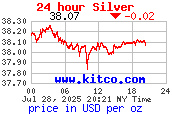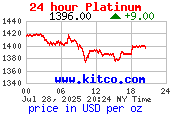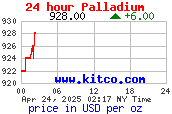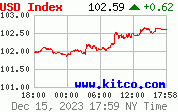The Option Pricing Model - Instructions
Trouble with viewing this tool? Click here for help.
This is the basic Black-Scholes options pricing model. It was originally designed to price European options, however it is also commonly used to price American options. You can also use this tool for calculating index options.
Why do you need it? This tool is one of the
essential basics for anyone interested in trading options.
How much will a particular option cost at given
day and given price?
What happens to option's value if the price of
the underlying security (if you trade stock options that would be this particular
stock) rises by $1 tomorrow?
What if it falls by $2.1 by next week?
With this tool answering these questions might
be easy and quick. All you have to
do is to fill appropriate boxes and hit the "Calculate!" button.
The "Current data" section is dedicated to values derived directly from the market, whereas the "Predictions" section includes values that you forecast or for which you want to make the calculations.
Below you'll find details regarding each box in
these sections:
- Choose the option type
Choose the type of option for which the calculations will be made.
- Stock price / index
value (current data)
This is the current price of the underlying security.
- Strike price
This is the strike price of the option, whose price you want to predict. This tool will not tell you which strike price can maximize your profits. If you want this question answered, please see our different tool - The Pyramid Optimizer and check the optimal strike price for single option (without pyramiding).
- Days to maturity (current
data)
Days that remain to the expiration date of the option, whose price you want to predict.
- Risk free rate (in %)
The theoretical rate of return of an investment with no risk. In practice, the interest rate on a 3-month U.S. T-bill is commonly used. You can check its current value here. If you think the rate is 3.4% enter 3.4 without "%".
- Current option value
This is the current price of the option, whose price you want to predict for different stock or index values.
- Stock price / index
value (predictions)
Predicted price of the underlying equity. Enter the price, for which you want to calculate the value of the option.
- Days to maturity (predictions)
Days you expect to be remaining until the expiration day, when the underlying security reaches the forecasted price. If you do not wish to make such specific projections, you may simply enter "1".
- Implied volatility
Degree of volatility implied by the market price of an option. In other words - this is the value we compute based on the current data and then use it to estimate the value of option with new (predicted) parameters.
Since the price was calculated using the Black-Scholes model, all assumptions made in this model also apply here. You can find them here.
This tool was designed for educational purposes only and may only be used as such, you use it at your own responsibility.
Please read the disclaimer on the bottom of the website

![[Most Recent Charts from www.kitco.com]](http://www.kitconet.com/charts/metals/gold/t24_au_en_usoz_4.gif)



![[Most Recent Copper from www.kitco.com]](/files/idx24_copper.gif)
![[Most Recent XAU from www.kitco.com]](/files/idx24_xau_en_2.gif)
![[Most Recent HUI from www.kitco.com]](/files/idx24_hui_en_2.gif)




